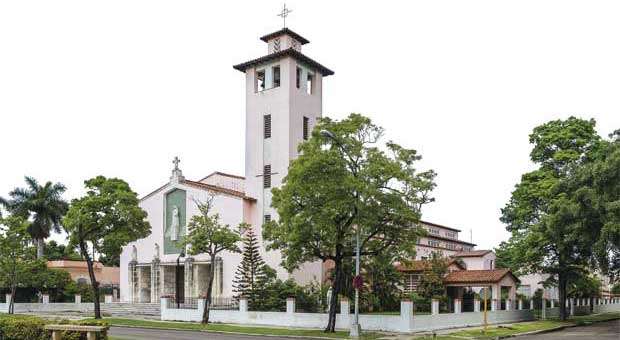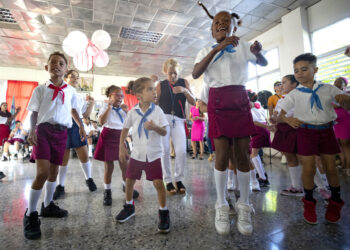This summer, one of the new features of Rutas y Andares (Routes and Walks), a Havana City Historian’s Office project now in its 13th year, involves three guided tours of the Miramar neighborhood in the
municipality of Playa called “Young People Show Off their City.”
The walks will be held on August 2, 9 and 16, led by students and professors from the Architecture Department of the University of Havana, and organized by the Casa de las Tejas Verdes, a center for the promotion of modern and contemporary architecture, urban planning and interior design.
The first tour—which ends at the Pabellón de la Maqueta de La Habana, a scale model of the city—includes some of the most important examples of architectural modernism in the area: the former Colegio La Salle, now the Pablo de la Torriente Brau Polytechnic Institute; the former homes of architects Enrique Borges, Miguel Gastón Martín and Max Borges Recio, which now house an embassy, restaurant and business, respectively; the home of the Falla Bonet family, designed by architect Eugenio Batista, a notable exponent of the local tradition/international codes connection; the building that housed the apartments of Indalecio Pertierra (former owner of the Montmarte cabaret), now the Solidaridad con Chile elementary school; the home of Paula Maza, designed by Max Borges Recio (now housing the Milano Lounge Club); the home of the Aspuru family (now Le Select); and the Santa Rita de Casia Catholic church.
On Aug. 19, the tour will begin at the remodeled Miramar theater/movie theater (Quinta Avenida and 94th street), and continue to the former office of the Trust Company of Cuba, designed by architect Eugenio Batista and enhanced by architect José Antonio Choy López (in 1997); it is considered as one of the best modernist buildings in Cuba. Other buildings, such as those housing the Laboratorios Farmacéuticos Kuba, designed by architect Rolando Castillo in 1947; the home/studio of the married couple and Nicolás Arroyo (a minister of public works) and Gabriela Menéndez, owners of the Arroyo-Menéndez construction firm; the Jesús de Miramar church, the largest in Cuba; and local hotel industry architecture: the Comodoro, Neptuno-Tritón, Occidental Miramar, Meliá Habana and Panorama, and the Miramar business center (Trade Center), in this case with the presence of architect Gregorio Logiudice, who is an investor in the Monte Barreto real estate company.
The third guided walk (Aug. 16) actually involves bicycling, and follows Calle Primera, starting at the park on Quinta Avenida and O streets facing the Casa de las Tejas Verdes (House of the Green Tiles). The guides will point out the Riomar apartment building, the Sierra Maestra offices, the La Puntilla shopping center, the Karl Marx theater, the homes of Martín Fox, Marcial Facio, Miguel Gastón and Max Borges Recio, the Colegio La Salle, the Balneario Universitario (University Beach Club), the national aquarium, and the Hotel Chateau Miramar.
















Hi, beautiful images; but which is which. Capitán & images are separated.